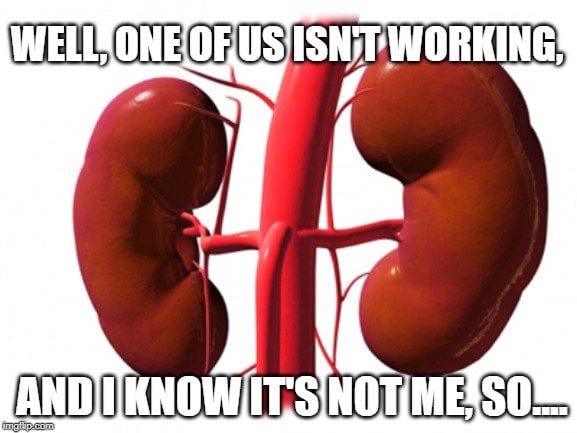Table of Contents (click to expand)
The most effective treatment for a pulmonary edema largely depends on the underlying cause. Oral diuretic medication can stimulate urination and the pulling of fluids out of body cavities. If the edema is being caused by an infection, such as pneumonia, antibiotics will be administered. Various treatments for kidney problems, including dialysis, may be required.
There are a number of problems that can arise within our bodies that our system will naturally balance. Hormones balance our metabolism and psychological state, our immune system addresses potential threats, and antioxidants help to eliminate dangerous byproducts from cellular respiration. Wounds heal and even some diseases can remedy themselves over time. However, there are also some acute threats to our health that are more complicated and require outside intervention.

One such problem is a situation in which we have fluid in our lungs, a potentially deadly affliction that can lead to drowning from the inside out! Before we dig into the frightening details of removing fluid from our lungs, we should first understand what can lead to such an unusual condition.
Recommended Video for you:
Fluid In Our Lungs
One of the first things we learn about our bodies is that our lungs are responsible for breathing, and considering that human beings can’t breathe underwater, the idea of having fluid in our lungs is rather terrifying. There are two conditions that are commonly convoluted when it comes to water and the lungs—pulmonary edema and pleural effusion. While both are related to water and the lungs, there are a number of important differences in terms of severity, treatment and cause.
Pulmonary Edema
This is a situation in which there is excess fluid in the lungs. The primary cause of pulmonary edema is cardiac problems, notably high blood pressure in the blood vessels of the lungs. To compensate for this high blood pressure, some of the fluid from the blood is released into the lungs, or leaks into the alveoli, the small sacs where the transfer of oxygen and carbon dioxide occur in the lungs. As these sacs begin to fill up, breathing may become more difficult, as oxygen is more difficult to access.

Pulmonary edema can either develop over time or come on acutely, often related to acute cardiac problems, such as congestive heart failure, where the heart is unable to properly pump the blood away from the lungs, resulting in high blood pressure in those blood vessels near the alveoli. Coronary artery disease and cardiomyopathy may also cause pulmonary edema. A gradual progression of pulmonary edema will be caused by long-term weakening of the heart, but there are also non-cardiac varieties of pulmonary edema. Some of the other causes of this edema include kidney failure, brain trauma, drug overdose, acute respiratory distress syndrome, or pulmonary embolism.
The typical symptoms of pulmonary edema differ slightly between acute and long-term varieties, but usually include difficulty breathing, particularly when lying down, wheezing, fatigue, rapid weight gain or swelling in the lower part of the body. One specific variety of pulmonary edema can also occur when you are at high altitudes, when your body is struggling to get enough oxygen from the atmosphere. Symptoms of this version of a pulmonary edema include headaches, coughing fever, difficult catching your breath, and an irregular heartbeat.
Pleural Effusion
While a pulmonary edema is often described as having water “in the lungs”, a pleural effusion is described as water being “on the lungs”. The difference between these two conditions is that in a pleural effusion, there is water build up in the pleura, a thin membrane surrounding the lungs and the chest cavity interior around the lungs. When water begins to build up in the layers of the pleura on the outside of the lung, it doesn’t pose as immediate a threat as a pulmonary edema, because it won’t negatively affect breathing. However, if a pleural effusion becomes serious enough, it can cause pressure and eventual collapse of the lung, so it must still be taken seriously.

Unlike pulmonary embolisms, the causes of a pleural effusion include autoimmune conditions, leaking of fluid from other organs, a pulmonary embolism, pneumonia, cancer or some other infection. It can also be caused by cardiac problems, such as congestive heart failure. In the case of a pleural effusion, the most immediate solution is to treat the underlying cause, such as the administration of antibiotics to clear up an infection. In the case of a serious effusion, it is possible to simply open up the chest cavity and insert a small tube into the pleural space, which will manually drain the liquid from this space. These types of interventions are only considered if other options aren’t viable.
How Does The Body Handle Fluid In The Lungs?
Now that we understand how fluid gets in and around the lungs, how is this serious problem solved? Particularly in the case of acute pulmonary edema, the problem must be addressed quickly to prevent your lungs filling up with water and causing drowning. If a temporary bout of high blood pressure occurs, it is possible for the problem of pulmonary edema to rectify the problem by reabsorbing the fluid through normal bodily processes. However, in the case of a chronic issue, the body has no natural way of eliminating that excess fluid. In other words, medicinal intervention is required.
The most effective treatment for a pulmonary edema largely depends on the underlying cause. If the case isn’t serious, or is slowly developing, the use of oral diuretic medication can often stimulate urination and the pulling of fluids out of body cavities. In more serious cases, intravenous diuretic drugs and hospitalization may be required. If the edema is being caused by an infection, such as pneumonia, then antibiotics will be administered. Various treatments for kidney problems, including dialysis, may be required if the edema is being caused by kidney failure.

Depending on the severity and cause of the edema, you may need to regularly check back with your doctor to ensure that your oxygen pathways aren’t being obstructed by excess fluid. In terms of preventative measures, some of the best ways include getting a pneumonia and flu vaccine, as well as protecting your cardiovascular health as much as possible, namely by eating right, exercising, avoiding smoking and maintaining a healthy weight.
A Final Word
Our bodies may be incredible machines, but even great machines can break down in small ways that result in huge problems. Having water in the lungs is one such issue, as it compromises one of the most fundamental bodily processes keeping us alive! If you begin experiencing any symptoms of pulmonary edema or “water in the lungs”, seek professional medical assistance immediately.
References (click to expand)
- Pulmonary Edema (Fluid in Lungs) - MedicineNet. MedicineNet
- Pulmonary edema - Symptoms and causes - Mayo Clinic. The Mayo Clinic
- Pleural Effusion - Causes, Symptoms, Types, and Treatments. WebMD
- Robin, E. D., Cross, C. E., & Zelis, R. (1973, February 8). Pulmonary Edema. New England Journal of Medicine. Massachusetts Medical Society.
- Gandhi, S. K., Powers, J. C., Nomeir, A.-M., Fowle, K., Kitzman, D. W., Rankin, K. M., & Little, W. C. (2001, January 4). The Pathogenesis of Acute Pulmonary Edema Associated with Hypertension. New England Journal of Medicine. Massachusetts Medical Society.













